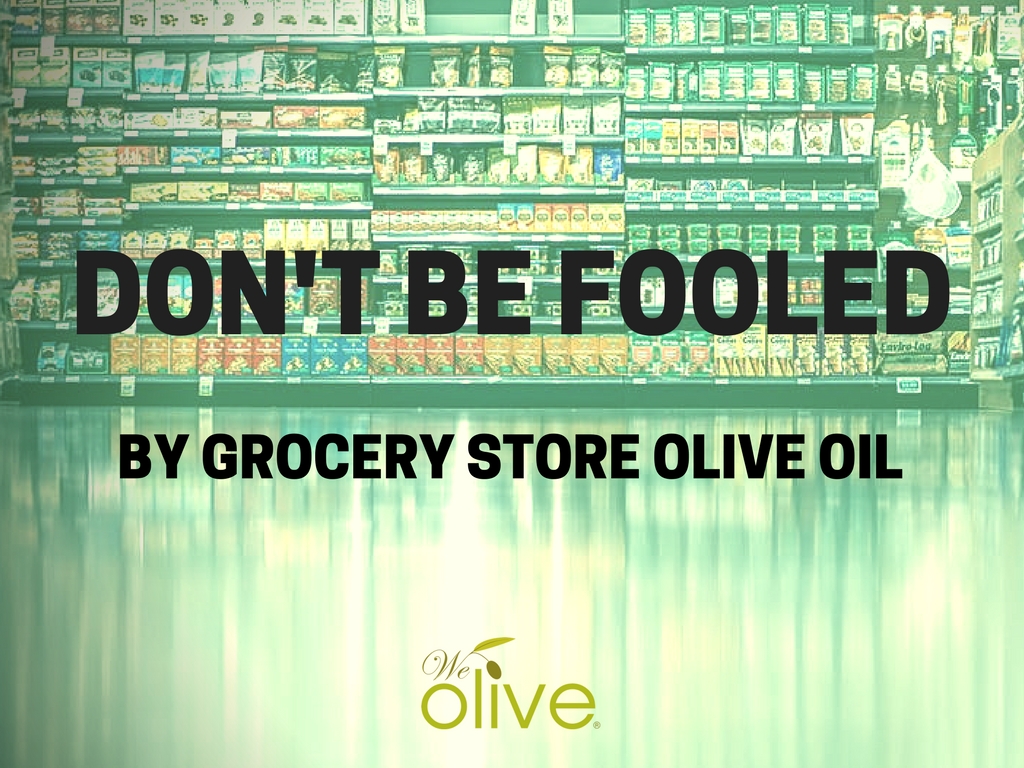Food fraud—or the act of deceiving consumers about a food or ingredient for the sake of profit—affects as much as 10 percent of the global food supply. Of all the instances of food fraud in the United States, according to a scholarly database tracking this very thing, olive oil leads the way, making up 16 percent of cases (followed by milk, honey, saffron, and orange juice). This type of deception has been around for basically as long as we’ve packaged food: Researchers have excavated mislabeled Roman jars containing counterfeit samples of oil.
One of the reasons oil is so often faked is that it’s bottled before you use it, and it travels far before it lands on grocery store shelves. The United States imports more olive oil than any other country and yet regulations on the labeling of said oil are voluntary. House and Senate subcommittees have urged the Food and Drug Administration to take a harder look at the issue; in a draft report accompanying the Agriculture Appropriations Bill for fiscal year 2017, the House committee stated it was “concerned with reports that consistently describe the prevalence of adulterated and fraudulently labeled olive oil imported into the US.”
Since extra-virgin olive oil is the most valuable oil category in the United States, shady producers and dealers have plenty of incentive to mess with it in hopes of reaping more profit. They defraud consumers in three main ways: by (1) diluting real extra-virgin olive oil with less expensive oils, like soybean or sunflower oil; (2) diluting high-quality olive oil with low-quality olive oil; or (3) making low-quality extra-virgin olive oil, typically incorporating older—and often rancid—stocks of oil held over from bumper crops of previous seasons. When the University of California–Davis researchers tested olive oil bought off the shelf in 2010, they found that 69 percent of imported “extra-virgin” samples failed to meet international standards, based primarily on sensory and chemical testing.
Aside from imparting rotten flavors and ripping people off, this fraud deprives people of some of the health benefits that may have prompted them to buy the oil in the first place: Fresh extra-virgin olive oil is higher in polyphenols, which may reduce the risk of heart disease. It’s also low in saturated fat and contains antioxidants.
So what’s the best way to avoid getting fooled?
1. Price. If you’re buying a liter of olive oil for $8 a bottle, you’re probably not buying 100% olive oil and there’s a slim chance that it’s extra virgin. True extra virgin olive oil is not cheap to produce, which is why some large oil producers blend olive oil with seed oils or use practices and extraction methods that do not comply with the standards for being designated ‘extra virgin’.
2. Harvest date. A good quality extra virgin olive oil will list a harvest date on the bottle. OliveOlive oil often makes headlines for its health benefits with new studies popping up each year highlighting the properties in EVOO that fight heart disease and cancer. In recent years though, olive oil is also making news for darker reasons. This story on 60 Minutes about the Italian mafia’s practice of producing fake extra virgin olive oil aired recently and has olive oil consumers rightfully concerned. This mafioso-made fake olive oil often makes its way across the Atlantic and lands on grocery store shelves around the United States. As a consumer, how can you know that you are buying the real deal? Here are some tips for what to look for and what to avoid when shopping for EVOO. oil is a fresh product that should be consumed within a year or so of bottling and a good producer wants you to enjoy their product at its best. If you don’t see a harvest date, move on!
3. Country of origin. This one is tricky. The majority of grocery store olive oils bear the label language ‘Made in Italy’. Italy produces some fantastic olive oils, but they probably aren’t sitting on your grocery store shelf. A lot of the oil you see touting Italian heritage is often made from olives grown in other countries like Morocco or Tunisia, and then shipped to Italy for bottling. There’s very little regulation on labeling of imports so it’s difficult to know if you’re actually getting what the label tells you. Phony imports often can sit in a warehouse for months before being sold, which is no way to treat a fresh product! If you buy California olive oil that is certified extra virgin by the California Olive Oil Council (COOC), you can trust that you’re getting the freshest, true extra virgin olive oil. If you are buying imported olive oil, make sure it has a harvest date!
4. Know your retailer. You are most likely to find true extra virgin olive oil from a specialty retailer. Larger grocery stores may carry certified extra virgin olive oil, but you have to know your labels. Shopping a smaller retailer where you can talk directly with someone who knows exactly where the olive oil came from is your best bet.
At We Olive, we’ve created a tasting room environment for you to experience and enjoy our fresh, certified extra virgin olive oils, learn about the farmer that produced the olives, and even how to use it in your cooking. Find a location near you or buy your certified EVOO in our online shop today!
Portions of this article originally appeared on Mother Jones. Find the full original article here.









Leave a Reply